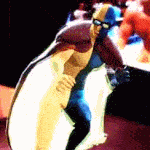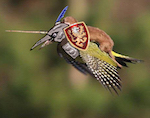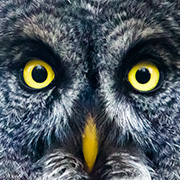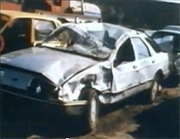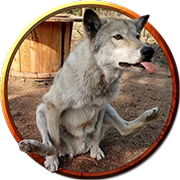|
I'm getting ready to pull the trigger on a DSLR purchase. I'm trying to keep my initial purchase under $600, so the camera I keep getting pointed towards is the Nikon D5300. I plan to use it mainly for animal/wildlife photography, mainly birds, so the extra AF sensor points are a big appeal, but I've seen some reviews saying that the sensor system is bugged or broken. Then again, I'm seeing that on reviews for pretty much every entry-level DSLR I look at. Does anyone have experience using this camera body for distant moving targets? Will I need to drop a ton of money on lenses to get adequate results?
|
|
|
|

|
| # ? May 18, 2024 11:01 |
|
1. Why do you want a DSLR? 2. What are you taking pictures of (Sports, Birds, Racecars, Airplanes?) Distant moving targets is a very general statement 2a what's important to you? indoor/ low light shots, outdoor daytime sunny day shots, night shots, portability / size, battery life for long days of shooting? 3. Are you opposed to used? You can get a pretty decent Body for the 300-400 and toss that remaining $200 on a lens that will help you with #2
|
|
|
|
tater_salad posted:1. Why do you want a DSLR? As mentioned, I'm trying to get into wildlife photography. I've sampled a few different cameras in the past, and regular point and shoot models don't have the range or the speed to capture targets the way I'd like--especially birds, my subject of choice. So I'll need something for outdoor with good portability and longevity, as well as the ability to photograph in low-light conditions at times. I've heard that Nikon is better for low-light shots, but Canon has a faster and more reliable autofocus system. Is this true? Stabilization systems are also important to me. I have a slight essential tremor in my hands that makes long-range shots tricky, but I don't want to be completely reliant on a tripod. I know stabilization is mostly done in the lenses nowadays--is there a significant difference between the quality in Canon vs. Nikon's systems? I'm not opposed to buying used, if you can recommend a good place to do so. I'm not sure how up-to-date the links in the OP are.
|
|
|
|
The alternative to a DSLR isn't a point-and-shoot, it's a mirrorless camera. There are some essential differences between DSLRs and mirrorless cameras in performance, but mostly those are more than offset by the smaller and lighter form factor of a mirrorless body. You still get interchangable lenses and all the control options that you'd find on an equivalent tier DSLR. Good DSLRs are pretty much the opposite of portable and that just gets exponentially worse if you are carrying long lenses around. Mirrorless cameras - especially micro-4/3rds systems - have much, much smaller and lighter lenses as well as smaller camera bodies. DSLRs generally don't have stabilisation in the body (Sony have it but not Canon or Nikon AFAIK), it's generally only in the lens and it's usually a premium feature - as in you can often spend double on a lens with stabilisation. Newer mirrorless cameras often have in body stabilisation and lens stabilisation as well. Your budget is probably not going to get a decent long lens with stabilisation and a newish body however. Long DSLR lenses are expensive, your budget would just about stretch to a midrange super-tele (say 150-600mm) without a camera to mount it on. It's very easy to spend 10x that on just a lens if you want pro level glass. My suggestion if portability and stabilisation are core features that you can't compromise on, is to look at the Olympus range - a used EM5 or a new EM10. Their in body stabilisation is supposed to be really, really good and the cameras are smaller and lighter than an equivalent DSLR. You can just about get a new EM-10 and a 40-150mm lens for your budget. You might be able to find a used EM5 instead for a bit more. Helen Highwater fucked around with this message at 17:09 on May 16, 2018 |
|
|
|
Ratspeaker posted:As mentioned, I'm trying to get into wildlife photography. I've sampled a few different cameras in the past, and regular point and shoot models don't have the range or the speed to capture targets the way I'd like--especially birds, my subject of choice. So I'll need something for outdoor with good portability and longevity, as well as the ability to photograph in low-light conditions at times. I've heard that Nikon is better for low-light shots, but Canon has a faster and more reliable autofocus system. Is this true?
|
|
|
|
Nobody ever mentions Pentax. It's the red-headed stepchild of the DSLR world. So I'm gonna let my inner fanboy out for a few minutes here. Pentax has a bunch of features going for it that are relevant for bird photography.
Weather sealing means you don't worry about the damp leaves you're pushing through, stalking that elusive bird. Stabilization helps squeeze a slightly faster shutter speed out and maybe not have a blurry mess with a too-slow shot. And backwards compatibility opens your shopping to a wide range of used gear that lets you choose a combination of focal length and maximum aperture beyond (some of) the restrictions on price imposed by concerns about autofocus mechanisms. $600 is not a big budget for bird photography. A $600 pair of binoculars will be pretty goddam great for birding, but no body+lens combo is going to have anything like those bino's brightness and reach. It's difficult to compare, though, because of course the camera can capture the image - the point, obviously. For $600 you could probably find a Pentax K-5 or K-5 II plus a manual-focus telephoto lens of 300 or 400mm and "OK" max aperture (f/5.6, rather than f/4 or even f/2.8 for really good glass, but miles ahead of the f/8 maximum that cheap, lovely superteles on eBay come with). KEH.com is a good place to look for used gear, in my opinion and in my experience. For Pentax, pentaxforums.com has a pretty good marketplace and good, in-depth reviews of pretty nearly every body and lens you can get for the Pentax system. A quick look on KEH shows me a K-5 for about $300 and a few lenses that either zoom to about 300mm or are primes at 300mm for between $150 and $300. So you could get that reach for your budget. If you pursue bird photography, you WILL discover that no amount of reach is sufficient. The bigger lenses will call to you...
|
|
|
|
Given the shutter speeds generally needed for wildlife, Iím presuming the stabilization elements is mainly for helping freeze the viewfinder, as opposed to effecting the photo itself (naturally if you canít see whatís going on in the vf the photo will probably suck, but still).
|
|
|
|
Ratspeaker posted:As mentioned, I'm trying to get into wildlife photography. sorry totally skimmed over that.
|
|
|
|
Every time I've pointed my lens at animal it's either run/flown away from me or been so far away it's a small dot in the middle of the frame. This was true when my longest lens was 250mm, and it still happens now that I can reach to 600mm. It leads me to believe anyone taking actual up close photos of an animal is either at a zoo or it's a staged photo with a trained creature. Birds can straight up gently caress off forever.
|
|
|
|
Yeah I rented a 200-500mm lens when I went to Alaska, and even on a crop body at full tele I was surprised how small most things would resolve to. Someone posted their Alaska pics in another thread and they were another world compared to what I got. Iím also still pissed the day with an insane amount of eagles on display was wet, and so I only packed the 18-35mm sigma.
|
|
|
|
While my back doesnít regret it, I sure do wish I had my 150-600 rather than just a 70-300 while in Taiwan, there were some neat days where the extra 300mm would have done wonders.
|
|
|
|
My birding set up is the EM5 with a 100-300 - for the life of me the full frame equivalent numbers have gone out of my head but itís long, and hereís the crucial bit, a well established feeding station. Even those lovely pictures of eagles in flight are taken near nests and in known feeding areas. If you are a bird watcher then the switch over will be relatively easy because the hard part is keeping them in frame and you will have had the practice with binoculars 
|
|
|
|
Wildlife photography is difficult to do cheap because long lenses are never cheap.... The cheapest decent entry in to DSLR would be to go used for a entry level Canon body and a 100-400 mk I (was going to suggest the 400mm f5.6 but it has no IS). A tripod is probably going to be beneficial too. That's all going to top $600 mind. Bridge cameras these days can be surprising not-poo poo particularly for those wanting to document their sighting rather than win Wildlife Photographer of the Year. (Birdforum.net has some useful threads). Re: Pentax. While they do offer a lot for the money, wildlife photography has to be one of the worst use cases for their system, due to a limited telephoto lenses lineup and autofocus/motor technology. Pick up a copy of The Handbook of Bird Photography by Varesvuo et al. It's a great look at world class nature photographers achieve what they do. Finally regarding 'distant moving targets'. Don't forget to factor atmospheric issues on to your expectations. Heat haze, dust etc can an do have noticable effect. World class wildlife photography is about using fieldcraft to get closer...
|
|
|
|
Ratspeaker posted:I'm getting ready to pull the trigger on a DSLR purchase. I'm trying to keep my initial purchase under $600, so the camera I keep getting pointed towards is the Nikon D5300. I plan to use it mainly for animal/wildlife photography, mainly birds, so the extra AF sensor points are a big appeal, but I've seen some reviews saying that the sensor system is bugged or broken. Then again, I'm seeing that on reviews for pretty much every entry-level DSLR I look at. Does anyone have experience using this camera body for distant moving targets? Will I need to drop a ton of money on lenses to get adequate results? I have a D5300, though haven't really used it for fast-moving wildlife. I've used the Nikkor 55-300mm for taking long shots of motor races, aircraft and rodeo, amongst others, though I've read the 70-300mm offerings are superior and less soft past 200mm. I get on with it fine, and put any photographic shortcomings down to my own amateur incompetence. Can post some long images if you'd find that helpful?
|
|
|
|
rio posted:The x100 is one of the best cameras ever made and other than not having a zoom (which is a plus to some) it blows everything about the Sony out of the water. So Iím pretty new to photography but interested in getting more into it and researching what cameras to go for etc. I noticed this, and whatís the benefit to not having a lens capable of zooming? From my brief research it appears to be those lenses have a wider range of available apertures, and have finer sharpness due to having fewer actual lenses inside them. Is this more or less the gist of it, or is there more to it? And of course forcing the photographer to physically move into position, probably forcing them to consider shots more carefully.
|
|
|
|
Prime lenses are also less complicated so often cheaper as well.
|
|
|
|
Erm cheap is relative. You can get £100 primes and £100 zooms and the prime will be better, but on the other hand 600mm f/4
|
|
|
|
Rebus posted:I have a D5300, though haven't really used it for fast-moving wildlife. I've used the Nikkor 55-300mm for taking long shots of motor races, aircraft and rodeo, amongst others, though I've read the 70-300mm offerings are superior and less soft past 200mm. Cars and planes are a very different beast to animals - especially birds. I can get reasonable shots of moving vehicles with a long lens because they are large, easy to see and are moving in consistent ways along foreseeable routes. Birds are small, fast, move erratically and like to spend time in areas where you can't see them clearly. Panning is a useful skill to have but it's super, super hard to get good shots of birds that aren't stationary. CodfishCartographer posted:So I’m pretty new to photography but interested in getting more into it and researching what cameras to go for etc. I noticed this, and what’s the benefit to not having a lens capable of zooming? From my brief research it appears to be those lenses have a wider range of available apertures, and have finer sharpness due to having fewer actual lenses inside them. Is this more or less the gist of it, or is there more to it?
|
|
|
|
To add aperture is a factor as well. The smaller the f number the faster it is, and by that it means that you can have a higher shutter speed. Itís very much the law of diminishing returns, a lens that can hit 200mm f/5.6 is relatively easy to produce, a lens that can hit 200mm f/4 is hard and 200mm f/3 is going to be complicated as all hell. Slow the subject down or speed the lens up is the key for animals. Also I would argue that sometimes it is your gear. We do get hung up with not being seen as being one of those people trying to buy our way out of a lack of talent but is your camera is bad at tracking and your lens still wanting to take photos at 1/25 at iso 6500 then yeh, itís your gear.
|
|
|
|
CodfishCartographer posted:So Iím pretty new to photography but interested in getting more into it and researching what cameras to go for etc. I noticed this, and whatís the benefit to not having a lens capable of zooming? From my brief research it appears to be those lenses have a wider range of available apertures, and have finer sharpness due to having fewer actual lenses inside them. Is this more or less the gist of it, or is there more to it? Thatís the general gist of it, plus price, weight, and size as mentioned. Youíre ďforcedĒ to get into position no matter what lens youíre using. Zooming into something doesnít have the same effect as walking closer to it.
|
|
|
|
learnincurve posted:
You're not wrong, but at the same time wildlife photography didn't magically start in 2003. I survived for many years shooting Provia with a crappy MF Tamron lens on a Nikon 8008. Better tools will open up a lot more opportunities, but don't be discouraged if you can't afford the >$1k "entry level" that people are discussing here. Get the Tamron 70-300VC or the best used lens you can afford and go have fun. The 70-300 will always be useful even if you eventually get a 150-600 or whatever.
|
|
|
|
BetterLekNextTime posted:The 70-300 will always be useful even if you eventually get a 150-600 or whatever. Absolutely. I held onto my 55-250 after getting the 150-600. It's a great focal length for backyard child shenanigans.
|
|
|
|
Oh Iím the one proposing a Olympus m4/3 camera with one of the longer zooms on  I had to google to remind myself but you double the numbers to get the equivalent , so a 25mm m4/3 lens is 50mm equivalent and my 100-300 m4/3 lens is 200-600mm equivalent, but smaller in size and weight than the Nikon 50-200mm kit lens.
|
|
|
|
Ratspeaker posted:As mentioned, I'm trying to get into wildlife photography. I've sampled a few different cameras in the past, and regular point and shoot models don't have the range or the speed to capture targets the way I'd like--especially birds, my subject of choice. So I'll need something for outdoor with good portability and longevity, as well as the ability to photograph in low-light conditions at times. I've heard that Nikon is better for low-light shots, but Canon has a faster and more reliable autofocus system. Is this true? My wife has a d3400 with the 2 lens kit. I have a pentax k3ii. Pentax doesnt have anything good in the same price range for birding. I would reccomend the d3400. With the 300mm zoom and the kit lens it is $500 now at costco and some other retailers when on sale. It has stabilization in the lens and is relatively lightweight and compact. The sensor is newer than anything else around this budget. You can crop more, use higher iso, and still have a usable/printable image compared to cameras with smaller screens or older sensors. You can upgrade to the nikon 200-500 or tamron 150-600 later if you need more reach. An olympus em5 or em10 ii with a 75-300mm zoom is another option for around the same price but used. The crop factor means you are effectively getting a 600mm lens instead of 450mm with the nikon. The crop factor in micro four thirds is 2x, instead of 1.5x for nikon or 1.6x for canon. Crop factor also affects your effective aperture so you are not getting something for nothing. Olympus and mirrorless in general has better video and better burst rate, often has touch screens and flippy screens. But there is some tradeoff with low light performance with the older sensor and smaller size. Combining in lens stabilization like the panasonic 100-300 ii with the olympus camera body stabilization is an option. IME the image stabilization reliably gives about 2 stops worth of speed for handheld shots against stationary targets for a d3400 and the 70-300mm compared to having it turned off. The four stops they advertise is unrealistic. I would expect 2.5-3 stops worth on the olympus instead of the 5 advertised. It has no effect on motion blur for birds in flight or if you are using a tripod.
|
|
|
|
I would generally avoid recommending entry level DSLRs as the usability is deliberately crippled despite the on-paper stats. If you must go for a DSLR, you'll get a much better camera by going for a used/refurb model from a range or two above (for Nikon, this would be the 5xxx/7xxx range).
|
|
|
|
This is going to sound far more mealy mouthed and post picky than I wish it to. Donít run olympus and Panasonic lens and body image stabilisation together, they can detect each other as movement and get into a feedback loop of IS which makes your image more blurry than if you had turned it off. Iím a big fan of entry level cameras for macro if they have manual focus peaking. I got some entry level Sony (A37?) as its light as anything and I donít notice the gimped focusing system in manual.
|
|
|
|
Is there anything terribly wrong with the Fuji X-M1? It looks like a nice, cheap "my first mirrorless" type camera to use for general photography while wandering around instead of having to lug a bigger DSLR around. I've seen them up for around £200, which is basically free in photography money.
|
|
|
|
Helen Highwater posted:I would generally avoid recommending entry level DSLRs as the usability is deliberately crippled despite the on-paper stats. If you must go for a DSLR, you'll get a much better camera by going for a used/refurb model from a range or two above (for Nikon, this would be the 5xxx/7xxx range). I'll second this. A great sensor at a cheap price sounds great, but then you find out that the firmware is missing simple features that existed on cameras in 2004.
|
|
|
|
Remember when Nikon removed bracketing from the d3100? Iím not sure if I should laugh or cry about that.
|
|
|
|
That was in large part why I passed on the 3100. (and then I wound up basically never using the feature anyway)
|
|
|
|
|
I wouldn't select a camera solely on whether it features bracketing, but when you end up somewhere with really challenging light (like, say, carlsbad caverns) it justifies itself real quick. It's a really basic feature that can be implemented entirely in software so there's no reason to not include it unless the manufacturer is being an rear end in a top hat.
|
|
|
|
Well, camera manufacturers have to differentiate their bodies from one another. I'm actually glad I did follow my friend's advice of not going entry-level if I could help it as if you are in any way serious about this hobby then you'll run into your cheap-rear end body's limitations quickly.
|
|
|
|
Then differentiate with actual features, not commenting out a block of code and dropping the price $50.
|
|
|
|
xzzy posted:Then differentiate with actual features, not commenting out a block of code and dropping the price $50. TBH that's how most software-as-a-service products work, too. Pay more $$$ or get gimped on features. It's lovely but other industries do it anyway.
|
|
|
|
Exactly, and the fact that the D3xxx, 5xxx, and 7xxx all use the same sensor hardware as each other means it's going to be things like bracketing that get dropped. Sometimes you get lucky, like in the case of my only MiniDisc player, where you can add in the dropped software features via firmware or unlocking it.
|
|
|
|
The d3x00 has no wifi, auto bracketing, in camera hdr, focus peaking(not on many nikon cameras), not fully tethering compatible, single control wheel, light consumer build quality/not weather sealed, only 5 fps and a weak buffer, no touch screen, no articulated screen, no in camera motor for autofocus with older lenses, no 4k video, no shutter lockup, limited compatibility with intervalometers pr other accessories, AF performance is not as good. For the d3400 auto sensor cleaning, accessory port, in camera panorama and mic input were removed compared to the d3300. Most of the above features are nice to have but not needed to take great pictures. The af performance in low light is the biggest drawback and the articulated screen is good to have for other kinds of wildlife. If birds are your main use, a newer camera with better image quality is better than an older camera with more features for the same price.
|
|
|
|
Iím still using a D300 and you will wrestle it from my cold dead hands. Once I realised that I would never print above calendar size so having a gazillion megapixels and iso one billion meant nothing, I achieved a plateau of zen like calm and instead of pouring money into chasing upgrades I could suddenly afford prime lenses.
|
|
|
|
Schneider Heim posted:TBH that's how most software-as-a-service products work, too. Pay more $$$ or get gimped on features. It's lovely but other industries do it anyway. Careful where you say that, they might get the idea to charge subscriptions for a camera's software controlled features.
|
|
|
|
xzzy posted:Careful where you say that, they might get the idea to charge subscriptions for a camera's software controlled features. Ugh. I think we can actually expect this at some point.
|
|
|
|

|
| # ? May 18, 2024 11:01 |
|
Sony already does that with some things like in-camera double exposures.
|
|
|


